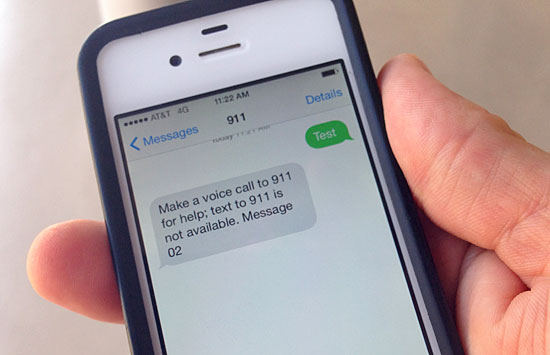Help isn’t just a text away (yet)
October 23, 2014
“Make a voice call to 911 for help; text to 911 is not available.”
That automated message isn’t what you want to receive during an emergency, when seconds count. But for now, that’s what people in Los Angeles County get when they send a text to 911.
That could be changing with the advent of new systems—called “text-to-911” and “Next Generation 911”—which would allow people to send texts, and eventually pictures and videos, directly to emergency dispatchers. On Tuesday, acting on a motion by Supervisor Don Knabe, the Board of Supervisors directed the county’s Chief Executive Office to explore ways of implementing the new technology.
The ability to receive photos and video could make a big difference for public safety workers, helping solve crimes and potentially saving lives, said Lieutenant Antonio Leon, who manages the Sheriff’s Department data network.
“The dispatcher would look at it and provide information to deputies in the field,” Leon said. For example, if a robbery has occurred and officers have a basic description of the suspect, “a video can corroborate that and provide additional information like height, facial hair or a unique item of clothing.”
And in the case of an active shooter situation, he said, law enforcement could get a head start on sizing up the situation and coordinating resources accordingly.
“Right now if something like a school shooting happens you’ll see people post things to social media, but it doesn’t become available [to authorities] until a long time after,” Leon said. Someone who now posts a photo to Twitter or Facebook could in the future send those images directly to a dispatcher, along with data indicating where it was taken. “Maybe there are people that are injured. Now you know you’re going to need medical resources ready to go, or maybe you just have to send the SWAT team in right away instead of waiting.”
Basic text-to-911 “should be capable of deploying in short order,” Leon said. But Next Generation 911—which goes beyond basic texting to include photos and videos, and the ability to pinpoint a user’s location via GPS— won’t be available until further down the road. First, the Sheriff’s Department and other first responder agencies must upgrade their technology. Another obstacle is funding, since local governments’ emergency call center equipment is provided by the Governor’s Office of Emergency Services. Karen Wong, the agency’s assistant director for public safety communications, said Next Generation 911 could be available statewide within five years—but only if funds can be found to make it happen.
Consumers’ increasing reliance on texting and communicating with smartphones has, ironically, dried up the state’s main source of funding for the program—fees attached to long distance calls from land lines. “The state account does not have enough money and it is actually depleting because it is based on interstate calls in California,” Wong said.
California’s program is part of a national effort being coordinated by the Federal Communications Commission. On August 8, the agency adopted an order requiring all text messaging providers to deliver emergency texts to any public safety agency that requests them. So far, a few dozen agencies in 12 states have launched text-to-911 and about 15 agencies have switched to full Next Generation 911, Leon said.
Still, most agencies aren’t quite ready to receive text messages, photos or videos just yet.
“If we do this right, this thing will be real nice and something we can rely on,” Leon said. “But it’s going to take a lot more work to get it going.”

It's not possible yet, but the county is studying ways to enable people to text emergency dispatchers.
Posted 10/23/14













 405 bridge work causes a stink
405 bridge work causes a stink
